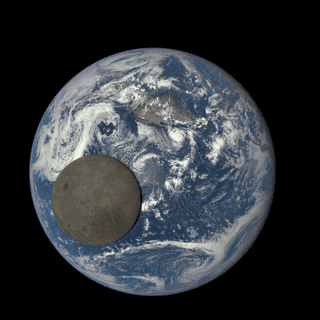We call it the “dark side” of the Moon, but that’s a rather improper name – a better one would be the “far side”, because it’s not dark at all. As if to prove that point, NASA just released images of the moon that would be impossible to capture from Earth, highlighting the far side illuminated completely.
There’s a pretty cool point some 932,000 miles away from Earth – where the gravity from the Earth and the Sun balance out perfectly – it’s called the Lagrange 1. This point is important for astronomers and engineers, because a satellite can orbit this point just like it orbits a planet. In early February, the United States Air Force launched a satellite to orbit that specific spot. The Earth Polychromatic Imaging Camera (EPIC) – a four megapixel CCD camera aboard the DSCOVR (Deep Space Climate Observatory) satellite – aims to monitor solar wind and forecast space weather at Earth. But that’s not all it does: it recently captured some spectacular images of the Moon, just as it passed in front of our planet.
“It is surprising how much brighter Earth is than the moon,” said Adam Szabo, DSCOVR project scientist at NASA’s Goddard Space Flight Center in a statement. “Our planet is a truly brilliant object in dark space compared to the lunar surface.”

EPIC’s “natural color” images of Earth are generated by combining three separate monochrome exposures taken by the camera in quick succession – it takes a total of 10 images using different narrowband spectral filters from infrared to ultraviolet. The red, green and blue channel images are used in these color images.
The images also show the geological differences between the near and far side of the Moon. The near side features extensive black, basaltic plains (called maria), while the far side doesn’t. A thin sliver of shadowed area of moon is visible on its right side.
The pictures have caused quite a stir even in the White House, where president Obama tweeted:
Pretty incredible time lapse of the dark side of the moon passing Earth from @NASA. American ingenuity at work! pic.twitter.com/JKep9bcxGQ
— President Obama (@POTUS) August 5, 2015






